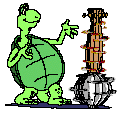| ESE504 : The Class : PEPSI : 9th year | |||||
 Ninth
Year
Ninth
Year
|
||||||||||
|
|
||||||||||
P |
The child begins to look more mature and and be described as a big boy or big girl.
Large muscle control and a sense of body ownership contribute to the physically active stance of this age child. Sexual awareness becomes more prominent and may be discussed with those of the opposite sex. There are frequent minor ills-eyes hurt when reading, dizzy when running, wrists hurt during penmanship... There is increased interest in the workings of the body. The child may turn to books to learn about sex, organs, menses, etc. Curiosity is common and often leads to active pursuit of answers. There may be some interest, though fleeting, in sex roles and clothing, actions, etc.
|
E |
Industry vs. Inferiority
Child feels and expresses a sense of personal dignity and self responsibility. "Worrying" begins to occur. Tensional outlets increase again - fidgeting, biting nails, fussing with hair. Child is less likely to stutter, but mutters and complains in under tones. Awareness of others becomes more acute. At five the child could verbalize nonverbal signals of joy and pleasure, at seven anger pain and scorn are noticed, while fear and surprise are added by nine years of age, with real awareness that others have the same sets of emotions and needs s/he feels. Adults are seen as people for the first time in the sense of having emotions and needs. (Parents are usually not).
|
P |
The child usually has a fair understanding of right and wrong by now.
S/he tends to tell the truth unless a lie will help to escape punishment -- and when lying, there is a true awareness. Praise for efforts is desired and usually effective for improving performance. There is a tendency toward accepting responsibility and expressing guilt for wrongdoing and error. Jobs and responsibilities are accepted, but the child tends to procrastinate at this age, forgetting to perform agreed upon tasks. The child is less likely to tattle at this age to look superior to others. Group loyalty may begin to form.
|
S |
The child is social
and the referent switches more definitely to friends and classmates.
Clubs and belonging are a push and desire for the child - especially when secret codes, messages, hand signals, etc. are part of the program. The child can be appealed to with respect to giving a fair hearing to others' ideas. Second person perspective develops rapidly in this age range. It can be expected that the child will begin to show self reliance. Being "caught" performing may be embarrassing since a social consciousness is developing. Bossiness is resented and eluded - especially from older sibs or students who "grab" the reins.
|
I |
Concrete stage is still most common and appropriate.
Conservation of matter should be occurring. Objects have discrete identity even when discontinuous, for example, water. Counted numbers now make real sense - 1:1. Rulers, maps, distance begin to make real sense and the child can realistically utilize devices in place of reality without losing sight of true meaning. Succession and duration as functions of time begin to make sense. Casual relationships can be taught and understood in a rudimentary fashion. Child has dawning of not being "center of the universe."
|
|
| Physical Development |
Emotional Development |
Philosophical Development |
Social Development |
Intellectual Development |
||||||
You should now:
Go on to 10th Year
or
Go back to PEPSI
E-mail J'Anne Ellsworth at jet@sedona.net
Copyright 1999
Northern Arizona University
ALL RIGHTS RESERVED